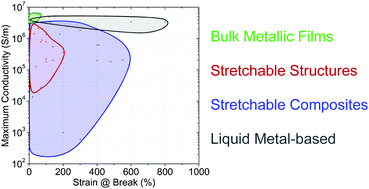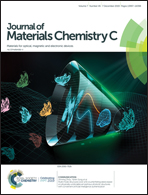Digitally printed stretchable electronics: a review
Abstract
Stretchable electronics are becoming an important branch in the field of electronics, with a rapidly growing number of studies on highly deformable circuits that can handle large tensile strains without losing electronic functionality. However, as the field continues to advance, a variety of manufacturing approaches must be explored so that these circuits can be produced in a rapid, precise, repeatable, inexpensive, and high-volume manner. Even in cases where methods from conventional printed circuit board (PCB) manufacturing are used, these techniques must be significantly modified in order to process the soft materials and fluids that are unique to stretchable electronic architectures. Digital printing methods such as Inkjet printing, 3D printing and laser ablation are especially attractive since they can be automated and eliminate the need for a stencil, mask or clean-room lithography. This article reviews recent advances in digital fabrication of stretchable circuits using either additive techniques, that allow direct printing of certain materials with a determined shape, or subtractive methods, in which the desired pattern is obtained by selectively removing parts of a greater film. For most of the materials used in stretchable electronics, these fabrication methods can be simple to implement, low cost, scalable over large areas, compatible with a broad variety of materials and have a size resolution that is comparable to conventional PCB manufacturing.

- This article is part of the themed collection: Recent Review Articles


 Please wait while we load your content...
Please wait while we load your content...